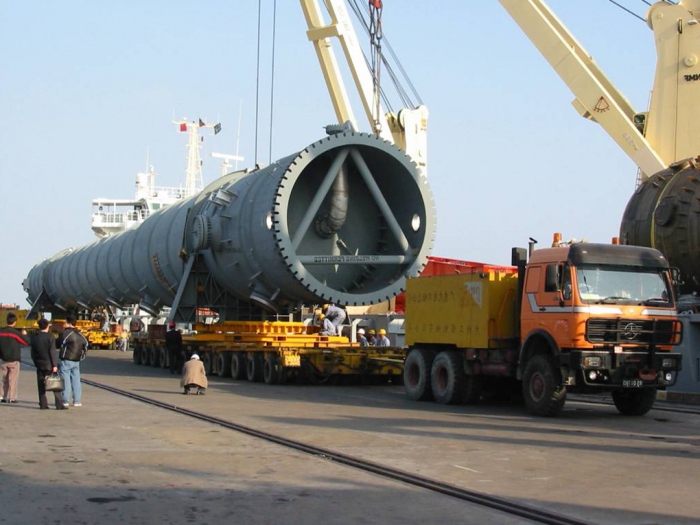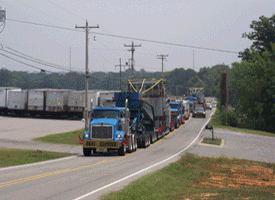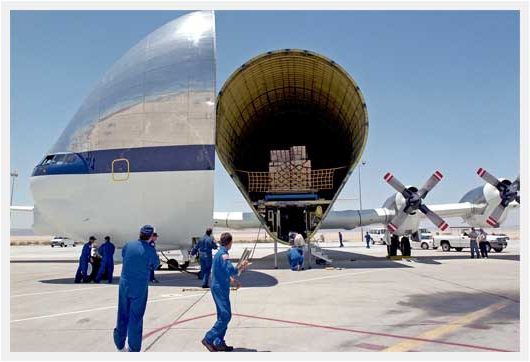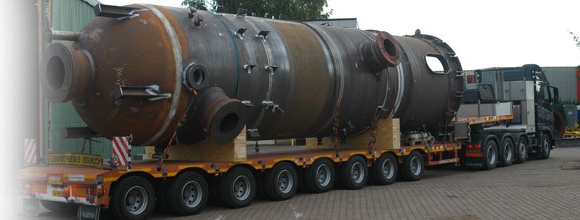Today it is no secret to anyone that oversized cargo in certain parameters can exceed the norms that are established by the relevant transportation rules, as well as the capabilities of a particular vehicle. Large goods cannot be transported in an ordinary car (or trailer to it) or in freight carriages.
Oversized cargo: dimensions, requirements

According to the rules of the road, such goods must be transported by a vehicle, the dimensions of which correspond to the following standards: width - 2.5 m, length - 20 m, height from the carriageway - 4 m. If the cargo is more than four meters wide, it must be transported accompanied by traffic police.
Thus, the following parameters are restrictions for a vehicle in terms of its functionality in terms of containing goods: height - 2.5 m, length - 13.6 m, width - 2.5 m. If at least one indicator is exceeded, this is already oversized cargo. The dimensions in this case affect the price of transportation.
Driver requirements

Transportation of this type of cargo is a complex and dangerous process. Therefore, special requirements are imposed on the driver, which include the following:
- review should not be limited due to cargo;
- competent fixing must be carried out, otherwise the car may roll over when driving;
- should not be difficult due to the load driving;
- retro-reflectors should not be obstructed;
- in the process of movement, the driver must control oversized cargo, the dimensions of which require special fastening.
Emerging difficulties
If the product has any non-standard characteristics (for example, a very large weight), the risk of damage to various road structures is significantly increased. Therefore, oversized cargo is transported only after agreement with the Federal Highway Service. It is this organization that issues the appropriate permission.
Key points

It is not always advisable to transport oversized cargo whose dimensions exceed the above norms. In this aspect, there are both pros and cons.
For example, the positive aspects of such transportation include:
- guarantee by the carrier of the safety of the goods and the safety of other participants in the movement;
- various vehicles may be used depending on the characteristics of such a load;
- if necessary, rail transport can be used.
Among the negative aspects are the following:
- transporting oversized cargo, the dimensions of which do not allow it to be optimally placed in a vehicle, is a rather troublesome and complicated matter;
- the need to coordinate such transportation with the Federal Highway Service;
- high cost of transportation.
Oversized Cargo Sign

The sizes established by GOST, we have already announced. According to the law, various special signs must be used in the transportation of non-standard goods. Let's consider some of them.
The “Road train” sign is used for road transport with one or more trailers. It has the appearance of three bulbs or a triangle. It should be included in the evenings and nights (in the dark).
What are the dimensions of the “Oversized Cargo” sign? This is a metal shield with dimensions of 400 x 400 mm and a strip width of up to 5 cm. It is used when there is a protruding cargo outside the vehicle at 1 m at the rear and 0.4 m at the edges.The mark must have a retroreflective coating for its use in the evenings or at night, as well as in low light conditions.
The “Long Vehicle” sign is located on the rear of the vehicle, its length reaches 20 cm. Appearance - a yellow rectangle with a red border measuring 1200 x 1200 mm. In the absence of a shield of this magnitude, two smaller sizes can be used.
In addition to these signs, in the dark can be attached to the load: in front - a white reflector, and behind - a red reflector. A flashlight may also be installed.
Ways to transport non-standard goods
 Let us consider in more detail the types of transport that can be used for the transport of goods of this kind. For example, if the product is too heavy, it is advisable to use platforms with the appropriate load capacity and a significant number of axles, which are a kind of protection against damage to the roadway and serve to optimally distribute the weight along the plane of the platforms.
Let us consider in more detail the types of transport that can be used for the transport of goods of this kind. For example, if the product is too heavy, it is advisable to use platforms with the appropriate load capacity and a significant number of axles, which are a kind of protection against damage to the roadway and serve to optimally distribute the weight along the plane of the platforms.
For transportation of oversized cargo, special transport such as ferries, barges, ships with transshipment in ports, for example, to a railway platform, can be used. We must not forget about such machines as truck tractors or trucks.
Travel Planning
Transportation of this type of cargo should be well planned. To develop the optimal route, there are specialists - logisticians who analyze various cargo objects, study possible route options, ensure the implementation of various regulatory requirements, form the optimal technology and movement scheme of non-standard structures.
Summing up the material presented, it should be noted that the transportation of oversized cargo is a rather labor-intensive business that requires very serious investments and knowledge.
